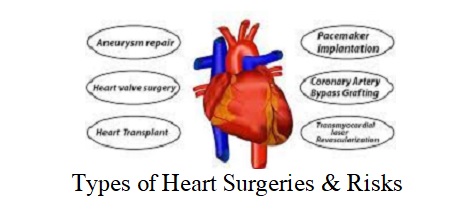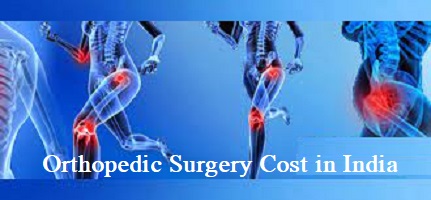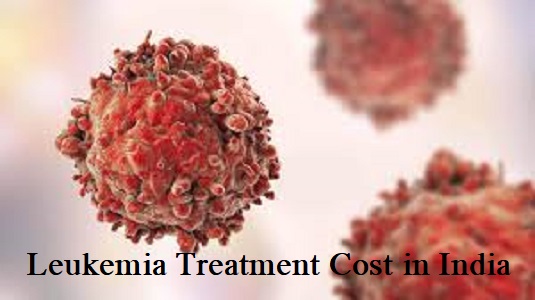Kidney Stones – Types, Symptoms, Causes, Treatment, Cost & Recovery
Kidney stones, also known as renal calculi or nephrolithiasis, are solid deposits of minerals and salts that occur in the kidneys or other parts of the urinary system. The incidence of kidney stones has gradually risen over time. According to current estimates, kidney stones affect around 12% of the global population. Kidney stones are classified into four categories depending on their composition: calcium, uric acid, struvite, and cystine. Here you know about kidney stone treatment cost, types, causes etc.
Types of Kidney Stones
- Calcium Stones: These are the most common form of kidney stones, accounting for around 80% of all cases. Calcium stones are usually made up of calcium oxalate or calcium phosphate. High calcium levels in the urine, as well as excessive consumption of oxalate-rich meals, can all contribute to their production.
- Uric acid stones: These account for roughly 5-10% of kidney stones. They form when there are excessive quantities of uric acid in the urine, which is commonly caused by illnesses such as gout, metabolic syndrome, or diets high in purines found in animal proteins.
- Struvite stones: These constitute around 10% of kidney stones and are closely associated with urinary tract infections (UTIs). They occur in alkaline urine as a result of bacterial infections, particularly those that are chronic or recurring.
- Cystine stones: These are rare, occurring in less than 1% of cases. They are caused by a hereditary disease known as cystinuria, in which the kidneys fail to reabsorb cystine effectively, resulting in cystine buildup in the urine and stone formation.
Symptoms of Kidney Stones
Symptoms of kidney stones often appear after the stone becomes stuck in the ureters, causing blocked urine and pain. Common signs of kidney stones are:
- Severe, acute pain: Pain can often be felt on the side and back, below the ribcage. This discomfort may radiate to the lower abdomen and groin. It may occur in waves with varying severity.
- Pain or burning sensation while urination: A kidney stone might cause discomfort or a burning sensation when peeing.
- Changes in urine: Changes in urine color and odor can be caused by kidney stones. Urine can seem pink, red, or brown. It might also be hazy or foul-smelling.
- Urinary urgency and frequency: People who have kidney stones may have a constant desire to pee, urinate more often than normal, or pass urine in small volumes.
- Nausea and vomiting: Kidney stones can cause nausea and vomiting, especially when combined with severe pain.
- Fever and chills: They may occur if an infection develops as a result of a kidney stone blocking the urinary tract.
Additionally, symptoms such as a strong desire to pee, bloody urine, and discomfort at the tip of the penis (in males) can all suggest the existence of kidney stones.
Causes of Kidney Stones
Kidney stones can occur as a result of a variety of situations that promote the production of solid mineral deposits inside the kidneys or other areas of the urinary system. These conditions can raise the quantity of crystal-forming chemicals in urine while decreasing the level of substances that prevent crystal aggregation, resulting in an environment favorable to stone formation. The following are some common causes of kidney stones:
- Low Urine Volume: Dehydration caused by insufficient fluid consumption, excessive perspiration, or living in hot surroundings can all contribute to low urine volume. Concentrated urine includes more minerals and salts, which raises the risk of crystal formation and kidney stone development.
- Diet: Certain eating habits may increase the chance of kidney stone development. A high intake of calcium, oxalate, or animal protein might cause these chemicals to accumulate in the urine, leading to stone formation. Also, sodium-rich diets can increase urinary calcium excretion, which promotes stone formation.
- Bowel Conditions: Bowel conditions such as Crohn’s disease, ulcerative colitis, or gastric bypass surgery can all raise the risk of kidney stones. Diarrhea from these conditions can cause fluid loss and decreased urine volume, while changes in intestinal absorption can cause high amounts of oxalate in the urine, which is a common cause of kidney stones.
- Obesity: It is linked to metabolic changes that may raise the chance of kidney stones. Obese people may develop stones due to changes in urine pH and altered calcium and other mineral metabolism.
- Medical conditions: Some medical conditions might make people more likely to develop kidney stones. Abnormal calcium metabolism, such as hyperparathyroidism, can result in high calcium levels in the blood and urine, increasing the risk of calcium-based kidney stones. Other diseases that might cause stone development include distal renal tubular acidosis and genetic conditions such as cystinuria or primary hyperoxaluria.
- Medication and Supplements: Certain medications and supplements may change urine composition and raise the risk of kidney stone development. Calcium and vitamin C supplements, as well as some medicines such as diuretics and anti-seizure drugs, may increase the concentration of stone-forming chemicals in the urine.
- Family History: People with a family history of kidney stones are more likely to develop them themselves. Genetic factors may predispose certain people to urinary defects that increase crystal formation and stone formation.
Diagnosis for Kidney Stone Treatment in India
In India, the diagnosis of kidney stones usually begins with a complete medical history, physical examination, and imaging testing. These diagnostic methods seek to properly examine the size, shape, and location of kidney stones to select the best kidney stone therapy option.
- Medical History and Physical Examination: Doctors in India begin by obtaining information regarding the patient’s medical history, such as previous experiences of kidney stones, symptoms, and risk factors. A full physical examination may also be performed to determine the patient’s overall health.
- Imaging tests: These are essential for identifying and characterizing kidney stones. High-resolution CT scans and KUB X-rays (kidney-ureter-bladder X-rays) are common imaging techniques in India. CT scans produce comprehensive pictures of the urinary system, allowing for accurate visualization of the size, shape, and location of the stones. KUB X-rays are very effective in determining the eligibility of stones for shock wave treatment. Also, ultrasound imaging can be used as a non-invasive and quick diagnostic technique to detect kidney stones.
- Blood and urine tests: These are used to evaluate kidney function, diagnose infections, and measure levels of calcium or other chemicals linked to stone growth. Urine testing, including 24-hour urine collection, can detect abnormalities such as excess stone-forming minerals or deficiency in stone-preventing chemicals.
- Analysis of Passed Stones: In some situations, patients may be requested to sample urine through a strainer to catch any passed stones. The laboratory study of these stones gives vital information about their composition, which helps in determining the underlying causes of kidney stones and creating strategies for preventing them.
Different options for Kidney Stone Treatment in India
Conservative Management for Small Stones with Minimal Symptoms
- Drinking enough water: Increasing fluid intake dilutes urine and may avoid stone development. Clear or almost clear urine indicates proper hydration.
- Pain relievers: Over-the-counter drugs like ibuprofen or naproxen sodium may be used to relieve minor pain caused by passing tiny stones.
- Medical treatment: Alpha-blockers, such as tamsulosin, may be given to relax ureter muscles, allowing kidney stones to flow more easily.
Surgical and Minimally Invasive Procedures for Large Stones
- Extracorporeal Shock Wave Lithotripsy (ESWL): The procedure uses shock waves to break down kidney stones into tiny fragments that may be passed through the urine. ESWL is appropriate for specific types and sizes of stones and is often done with sedation or mild anesthesia.
- Percutaneous Nephrolithotomy (PCNL): This procedure includes creating a tiny incision in the back to access and remove big kidney stones with specialized equipment. It generally works for big stones or those that cannot be treated using traditional approaches.
- Ureteroscopy: It involves passing a thin, flexible scope into the urethra and bladder to reach a stone in the ureter or kidney. The stone can then be fractured or removed with laser technology or specialist equipment.
- Open, laparoscopic, or robotic surgery: These methods may be used in rare cases if other minimally invasive techniques are not possible or successful.
Medication
- Tamsulosin and other medications may be used to relax the ureter and allow stone transportation.
- Pain relievers, antibiotics for infections, and medications to change urine composition (such as allopurinol) may all be recommended as part of the treatment plan.
Monitoring and Follow-up
- Patients with kidney stones may be monitored regularly using imaging examinations, urine analysis, and blood testing to determine stone composition, kidney function, and general health.
- Follow-up meetings with doctors are important for determining treatment efficacy, managing symptoms, and preventing recurrence.
Stages of Passing a Kidney Stone
Stage One: Kidney Stone Formation and Spasms
When a kidney stone grows, spasms occur as the kidney tries to remove it. This stage is identified by severe back or side discomfort that might occur in waves.
Stage 2: Stone enters the ureter.
As the stone passes from the kidney to the ureter, the pain worsens. This stage may include acute, intermittent pain and increasing pressure in the affected region.
Stage 3: Stone reaches the bladder.
When the stone enters the bladder, the pain will usually subside. However, there may be a feeling of pressure in the bladder and a frequent need to pee. Occasionally, the stone can block the urethral opening.
Stage 4: Passage through the Urethra
The stone eventually travels through the urethra when urinating. To thoroughly evacuate the stone at this point, you may need to exert some effort and attention.
Kidney Stone Treatment Cost in India
In India, the average cost of kidney stone removal is around $1,800, however, rates vary by city. Treatment costs vary according to the method of treatment performed. Open surgery normally costs roughly $2,700, whereas ureteroscopic lithotripsy costs $1000. Percutaneous nephrolithotripsy costs around $1,050. The typical cost of kidney stone laser therapy is around $1,000. However, it is important to remember that these rates are estimates and may vary depending on hospital facilities, surgeon fees, and extra medical requirements.
Kidney Stone Treatment Success Rate in India
In India, the success rate for kidney stone surgery ranges from 50% to 90%. The success rate varies depending on the position of the stone in the urinary system, the surgeon’s level of skill, and the surgical method used. Kidney stones are treated using a variety of methods, including shockwave lithotripsy, ureteroscopy, and percutaneous nephrolithotomy. Success is judged by the capacity to efficiently remove or break down the stones, restore normal urinary function, and avoid recurrence.
Top Hospitals for Kidney Stone Treatment in India
In India, some reputable hospitals provide advanced facilities and specialized care for kidney stone therapy. These top hospitals have innovative technology and competent urologists on staff. Patients seeking kidney stone treatment can benefit from the complete services offered, which include precise diagnosis, tailored treatment plans, and post-operative care. These best hospitals stress patient comfort, safety, and excellent outcomes, making them popular locations for those seeking kidney stone treatment.
- Medanta – The Medicity, Sector 38, Gurgaon, Haryana, India
- Fortis Memorial Research Institute, Sector 44, Gurugram, Haryana, India
- Artemis Hospital, Sector 51, Gurgaon, Haryana, India
- Apollo Hospitals, Delhi, India
- Shalby Sanar International Hospital, Gurgaon, Haryana, India
- Max Super Speciality Hospital, Saket, New Delhi, India
- Manipal Hospitals, Dwarka, Delhi, India
- BLK Super Specialty Hospital, Pusa Road, New Delhi, India
- Narayana Superspeciality Hospital,Gurgaon, Haryana, India
- Marengo Asia Hospital, Gurgaon, Haryana, India
Best Doctors for Kidney Stone Treatment in India
In India, various highly qualified doctors specialize in kidney stone therapy, providing skilled assistance along with customized treatment plans. These doctors are known for their significant experience, advanced medical knowledge, and commitment to patient well-being. They use modern procedures and technology to accurately identify and treat kidney stones, resulting in the best possible outcomes for their patients. With an emphasis on patient-centered care, these doctors address individual needs and preferences while offering empathetic support throughout the treatment process.
- Prof. Anant Kumar – Max Super Specialty Hospital, Saket, New Delhi
- Sanjay Gogoi – Manipal Hospitals, Dwarka, Delhi
- Rajesh Ahlawat – Medanta The Medicity, Gurugram
- Prof. Sandeep Guleria – Indraprastha Apollo Hospitals, New Delhi
- Varun Mittal – Artemis Hospitals, Gurugram
- Dinesh Khullar – Max Super Specialty Hospital, Saket, New Delhi
- Saurabh Pokhriyal – Fortis Memorial Research Institute, Gurgaon
- Akhil Mishra – Indraprastha Apollo Hospitals, New Delhi
- Manju Aggarwal – Artemis Hospital, Gurugram
- Rajeev Sood – Marengo Asia Hospitals, Gurugram
Contact Form
Attach Medical Report
Top Doctors & Surgeons in India
Why Choose Us

Personalized Care
24x7 Supports
Top NABH and JCI accredited Hospitals
Free Cost Estimation & Medical Opinion from Specialist
Get Free Tele/Video Consultation
Visa and Traveling Assistance
Post-surgery with Assistance in Follow-ups














